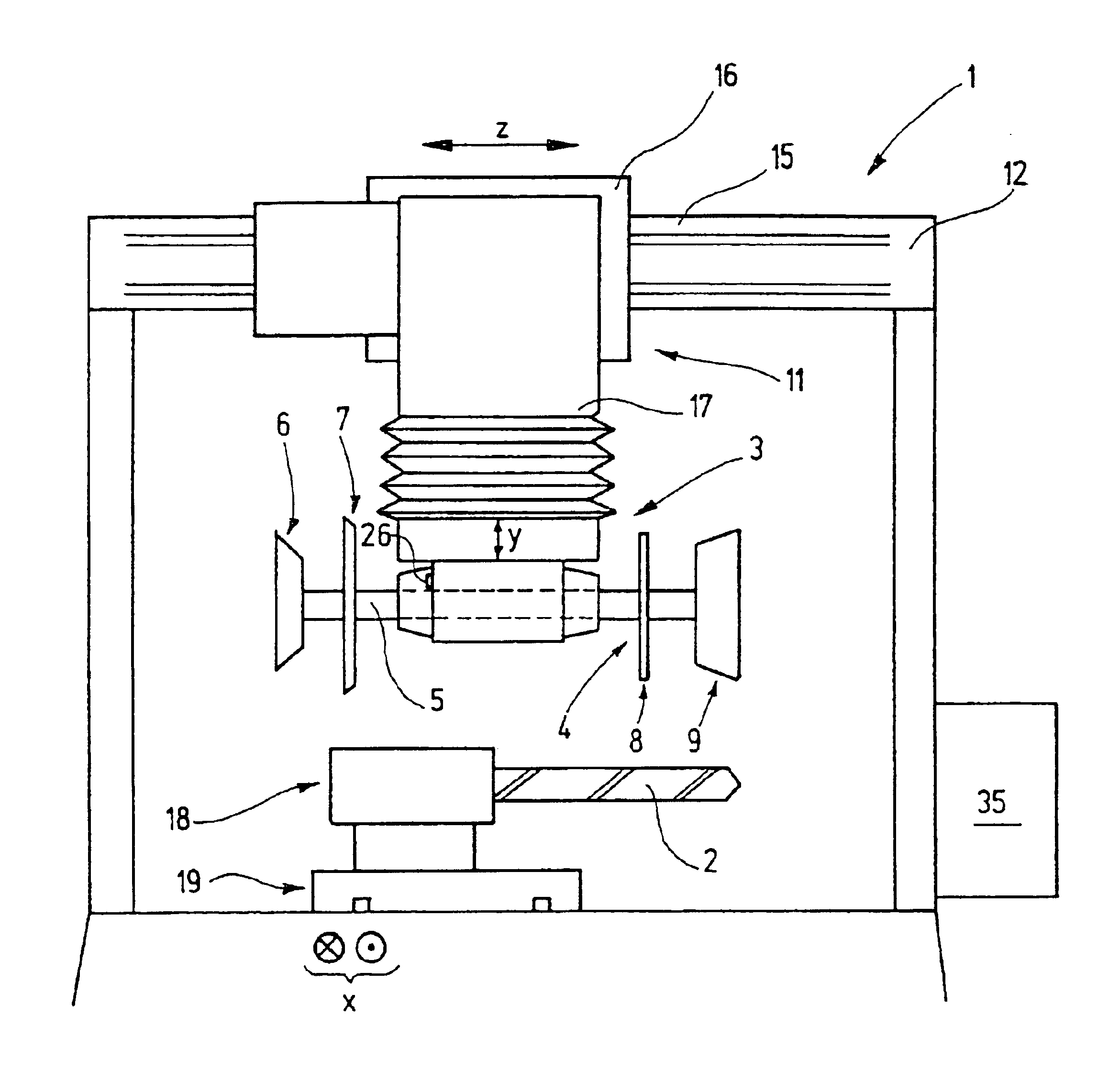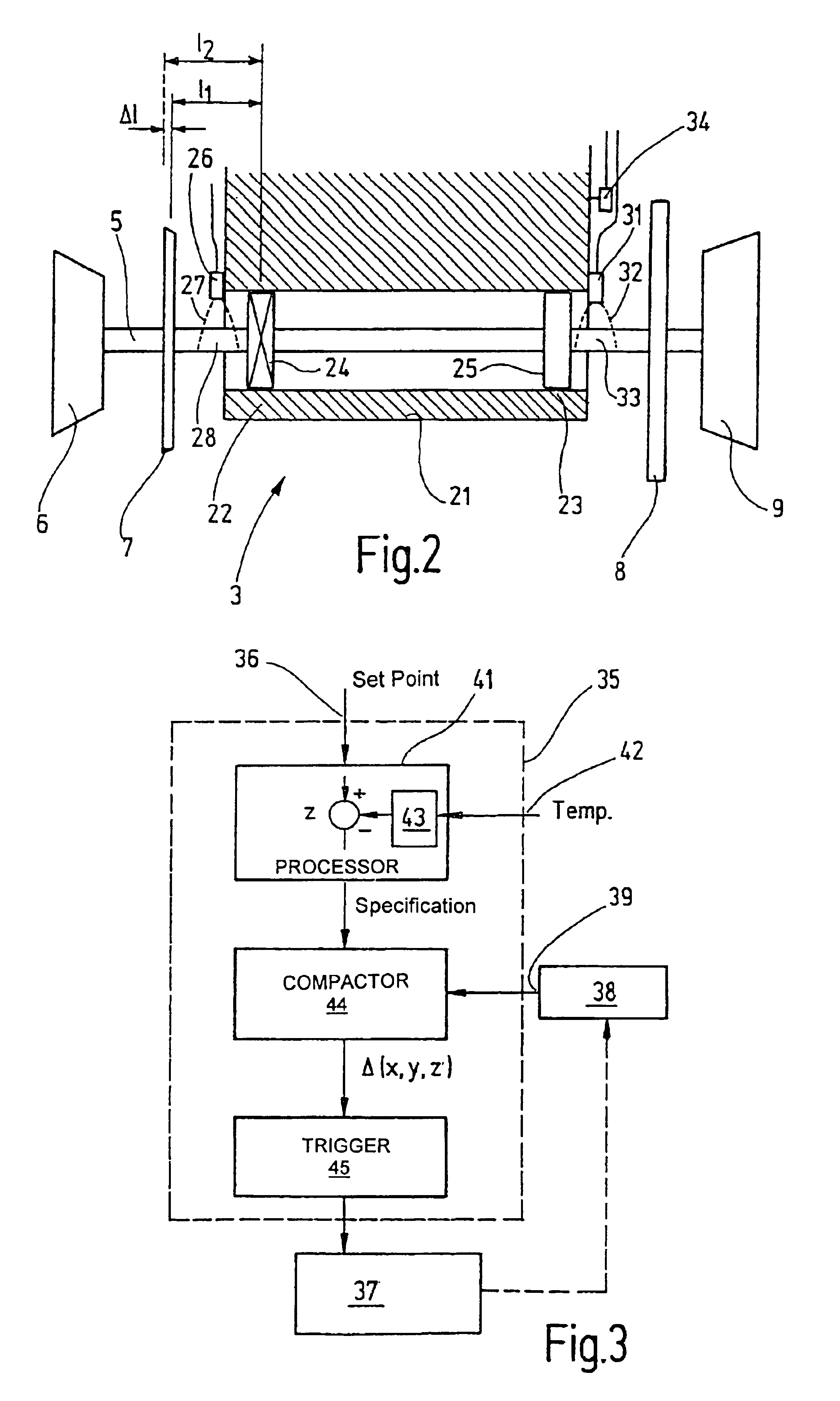Machine equipped with a temperature compensated lathe spindle
a technology of temperature compensation and lathe, which is applied in the direction of electric controllers, programmers, instruments, etc., can solve the problems of impairing machining precision, large amount of heat generation, and high machining precision, etc., to achieve the effect of reducing the number of parts
- Summary
- Abstract
- Description
- Claims
- Application Information
AI Technical Summary
Benefits of technology
Problems solved by technology
Method used
Image
Examples
Embodiment Construction
[0018]In FIG. 1, a machine 1 embodied as a grinding machine is shown; it is used to machine tools 2, such as drills, milling cutters, and the like. Thus in the present situation, the tools 2 are the workpieces. For machining them, in the machine shown as an example here, a combined grinding and erosion head 3 is used, which has a work spindle 4. A shaft 5, which carries tools 6, 7, 8, 9, belongs to the work spindle. The tools 6, 7, 8, 9 can be grinding tools, erosion tools, or the like.
[0019]The grinding and erosion head 3 is held via a positioning device 11 on a machine frame 12. By way of example, a horizontal positioning device 14, which is formed by a horizontal guide 15, a carriage 16 supported on it, and an associated drive device, belongs to the positioning device 11. The horizontal positioning device 14 serves to position the grinding and erosion head 3 in the Z direction.
[0020]The carriage 16 carries a vertical positioning device 17, to which in turn a guide in a drive mech...
PUM
 Login to View More
Login to View More Abstract
Description
Claims
Application Information
 Login to View More
Login to View More - R&D
- Intellectual Property
- Life Sciences
- Materials
- Tech Scout
- Unparalleled Data Quality
- Higher Quality Content
- 60% Fewer Hallucinations
Browse by: Latest US Patents, China's latest patents, Technical Efficacy Thesaurus, Application Domain, Technology Topic, Popular Technical Reports.
© 2025 PatSnap. All rights reserved.Legal|Privacy policy|Modern Slavery Act Transparency Statement|Sitemap|About US| Contact US: help@patsnap.com



